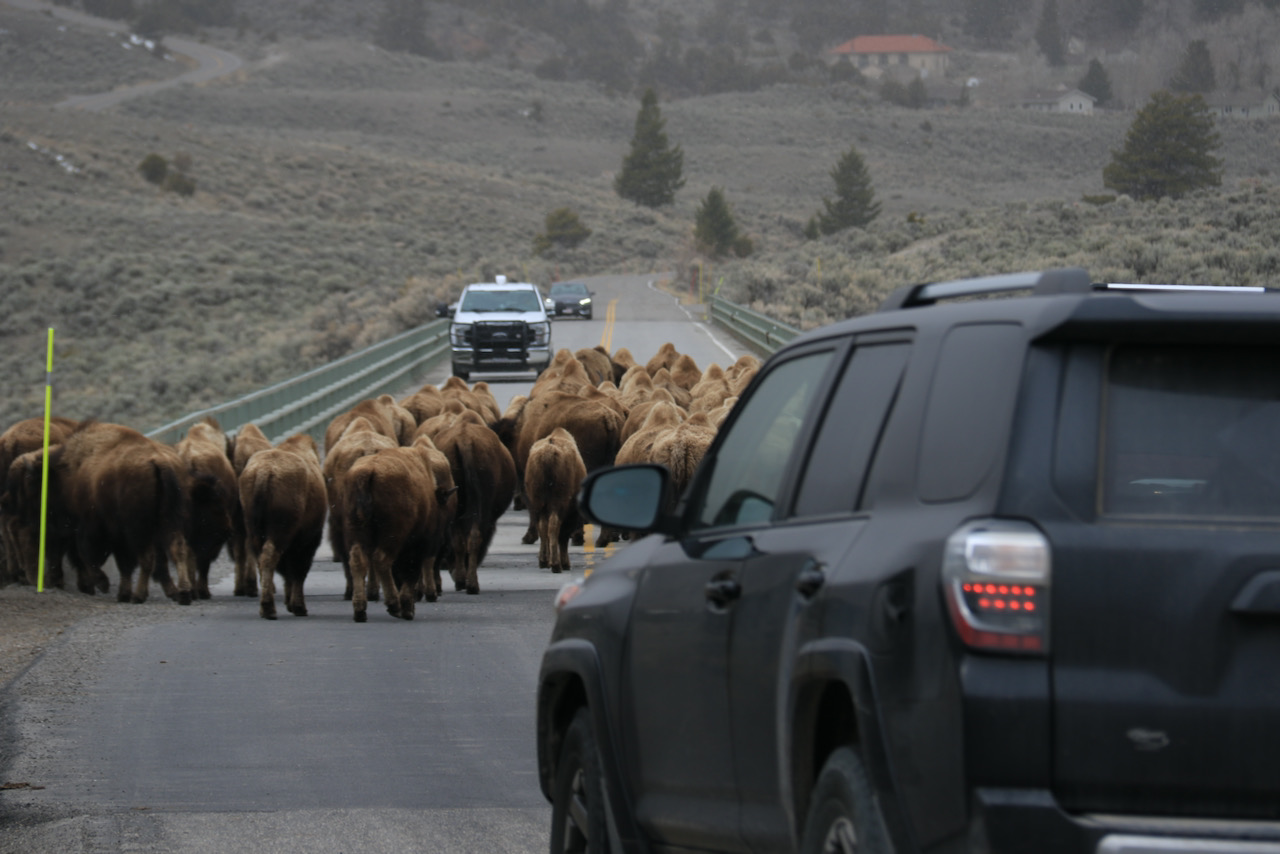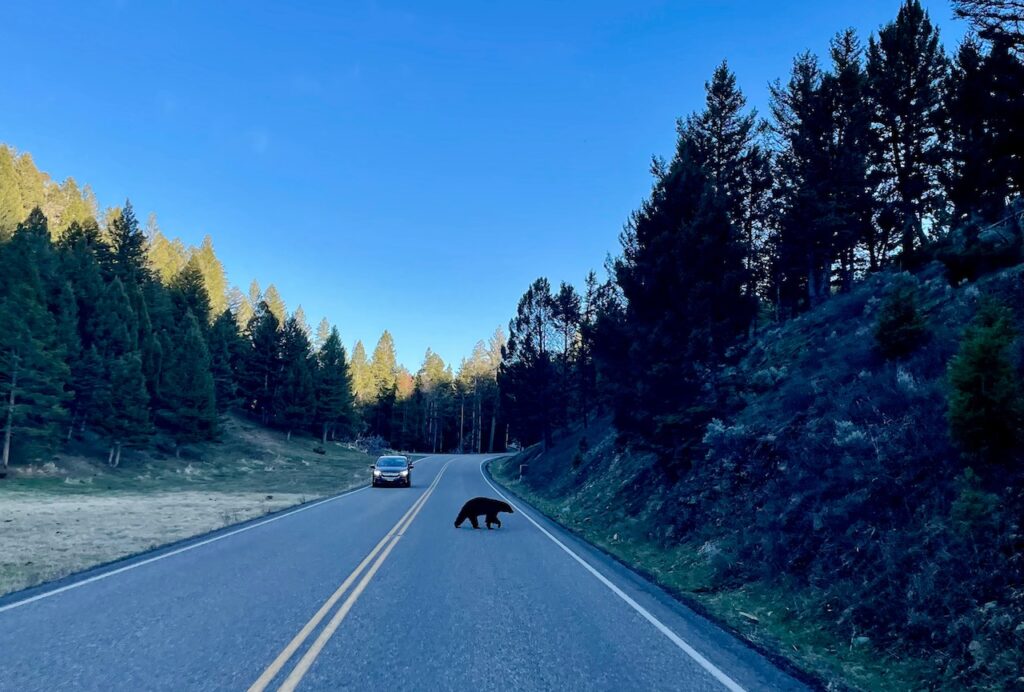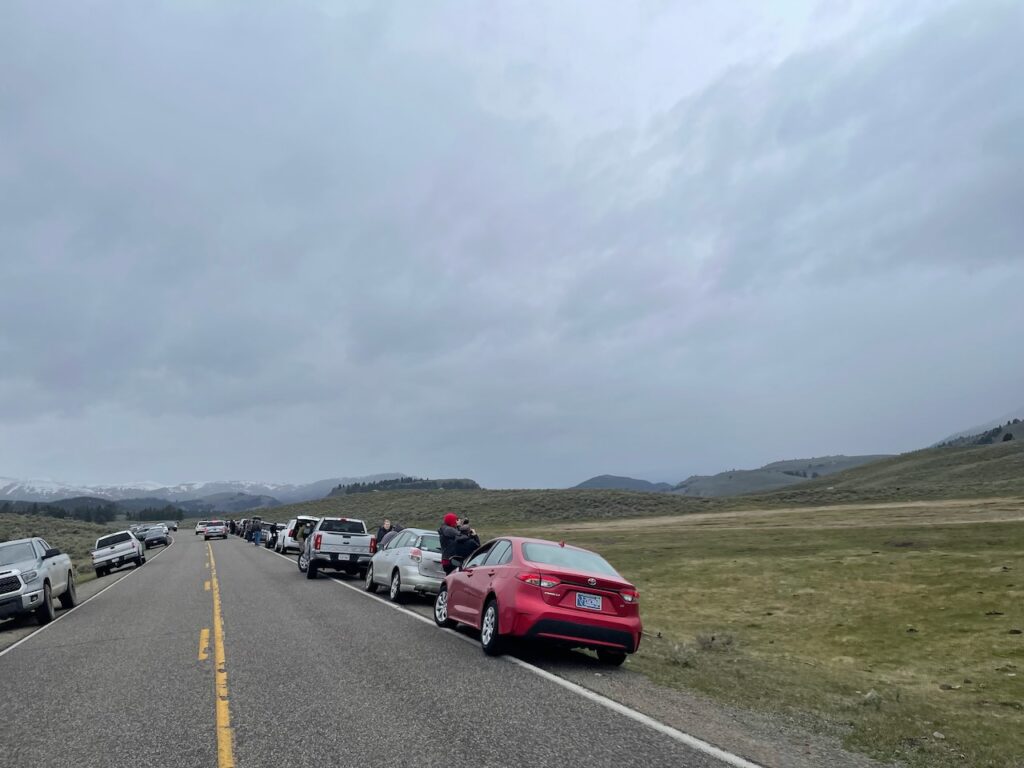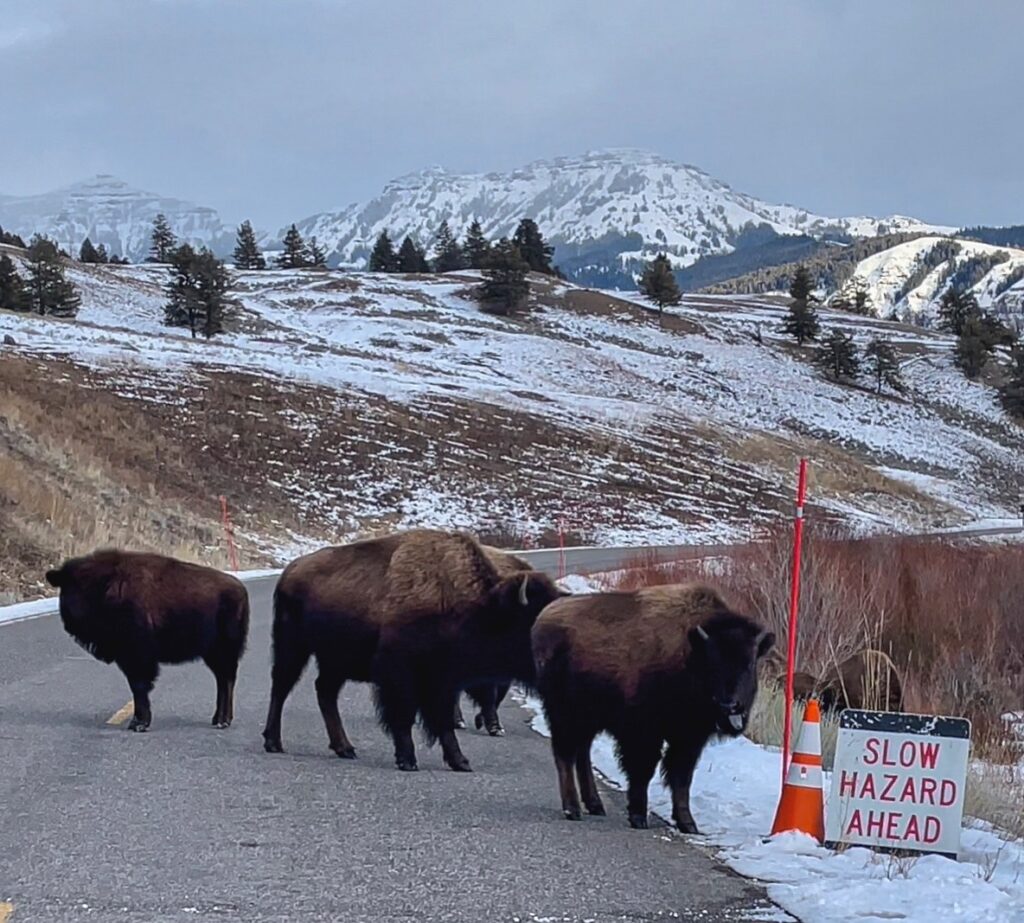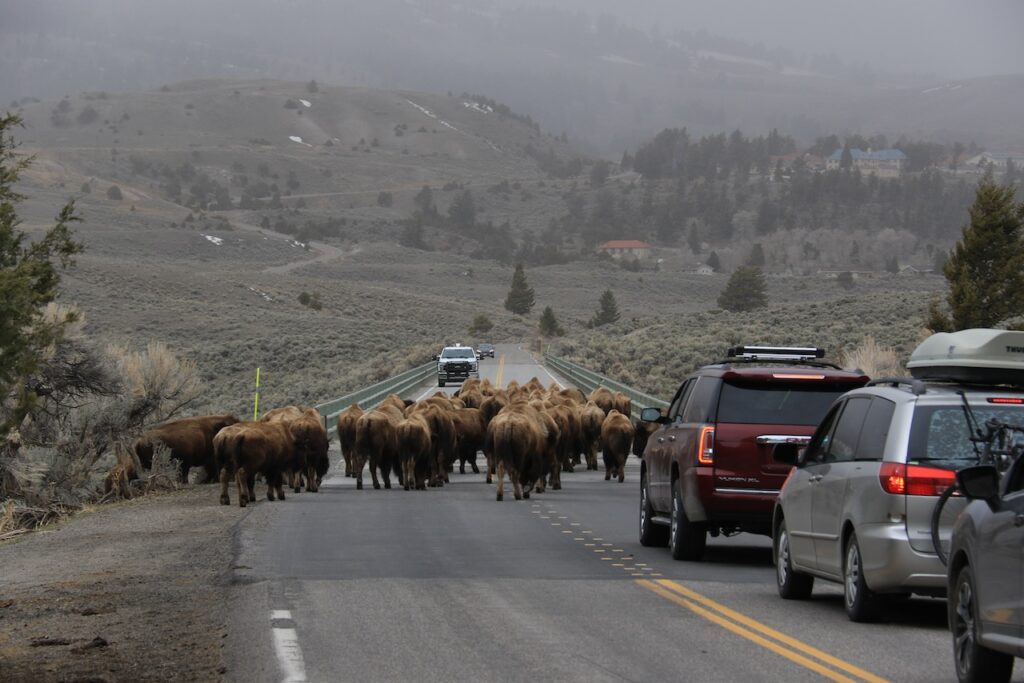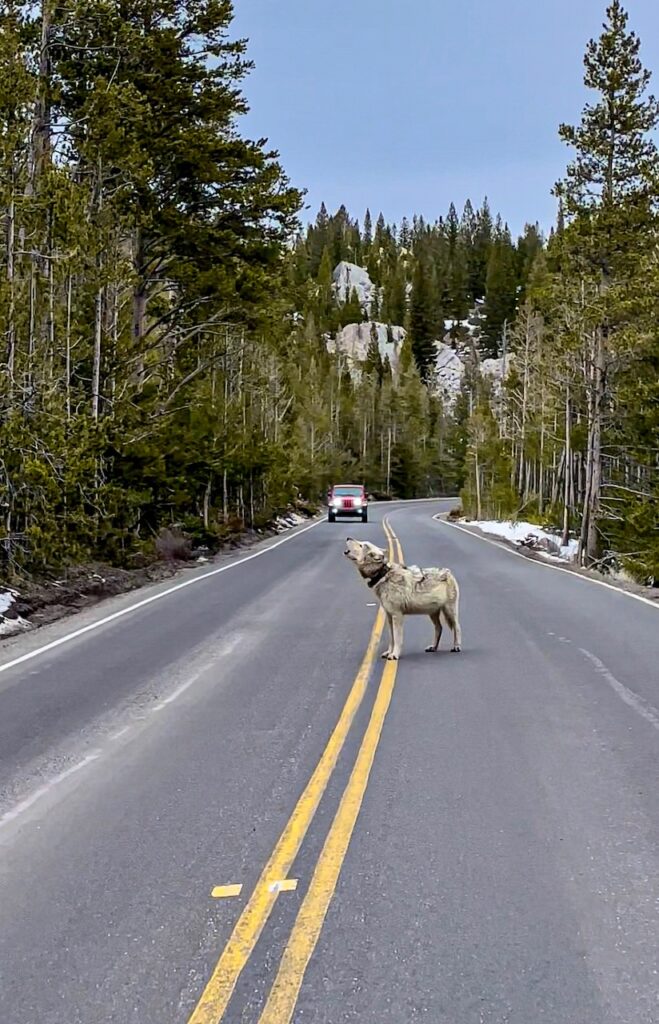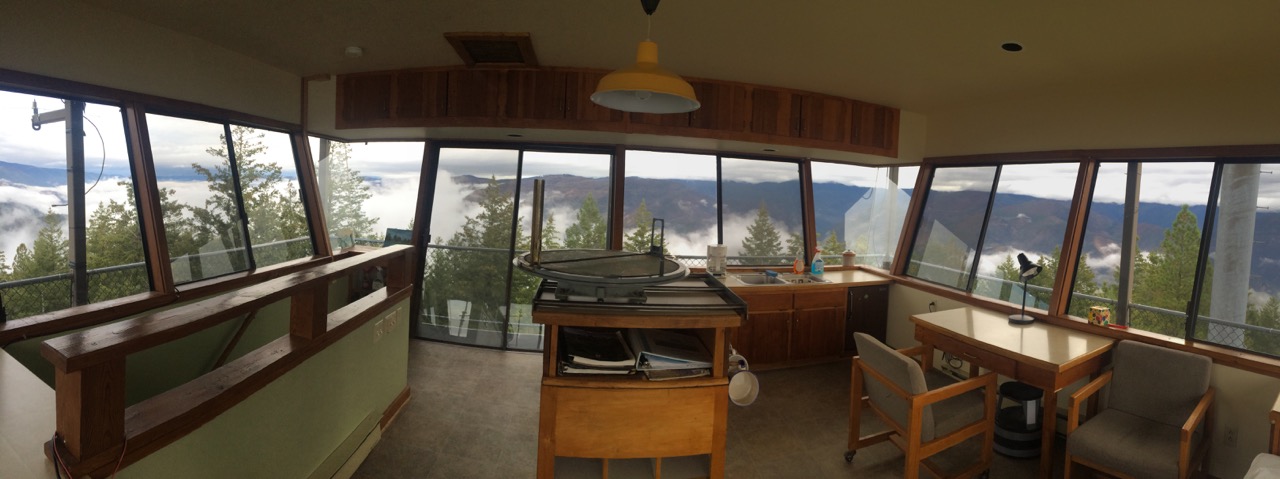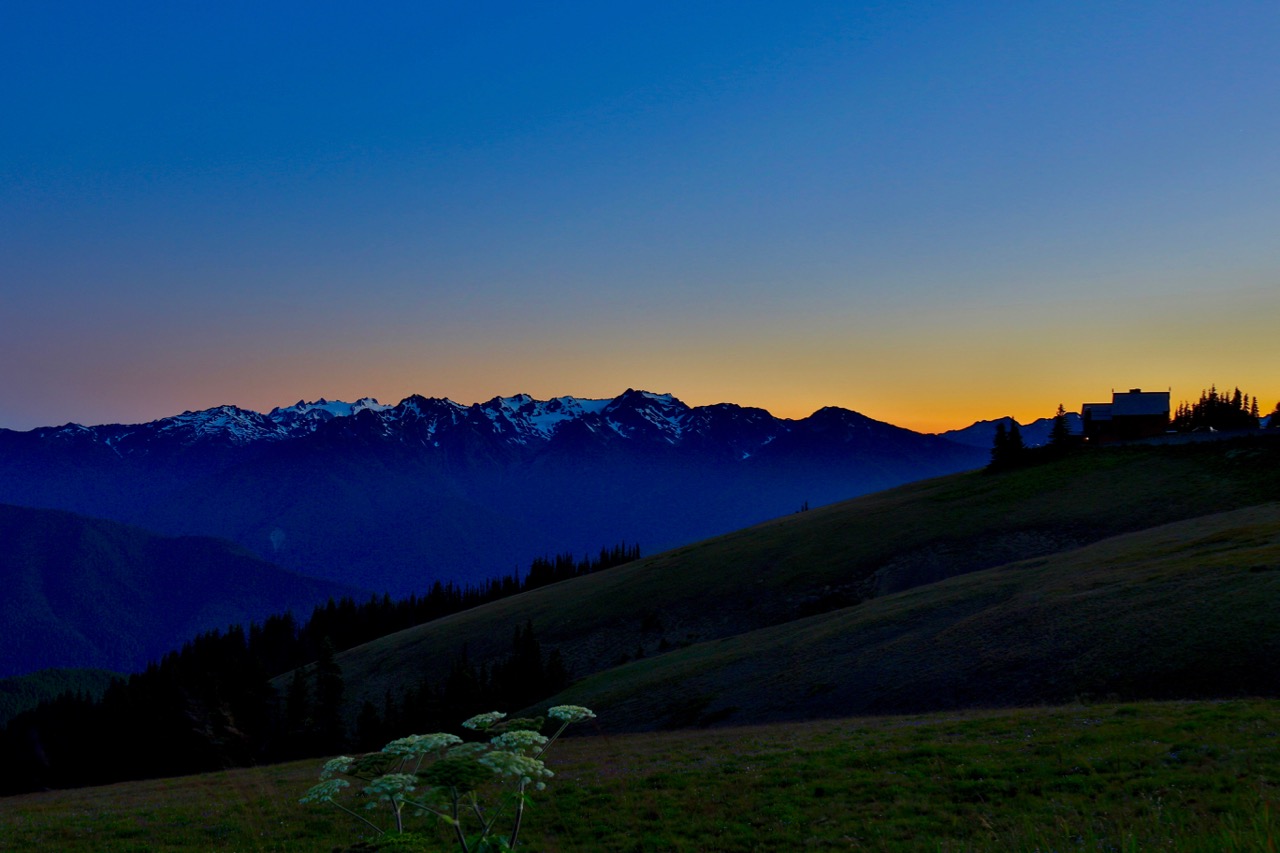Driving through Yellowstone National Park offers a chance to experience its stunning landscapes and diverse wildlife up close. However, it also requires a commitment to driving responsibly to protect this unique environment and ensure the safety of all visitors. By staying in your lane, following speed limits, using pullouts correctly, being mindful of wildlife, and exercising patience and courtesy, you can help maintain the park’s serenity and safety for all.
Without delay, here are five simple ways to drive responsibly on the 300+ miles of roads in Yellowstone.
Stay in Your Lane
This may seem like very straightforward advice, but as someone who drives often in Yellowstone National Park, I can assure you that many visitors struggle with it.
There are three main reasons for this difficulty. First, the roads in Yellowstone are narrower than what most people are accustomed to outside the park. Unlike highways and town roads, Yellowstone’s roads have no shoulders. Additionally, modern cars, especially larger trucks and SUVs, make the roads feel even narrower. This often causes drivers to overcorrect and cross the center line, even when oncoming vehicles are approaching.
Second, many drivers are unfamiliar with the terrain. Those of us who live in mountainous areas are used to winding, narrow roads and think nothing of driving next to a steep drop-off at the posted speed limit. However, visitors may not be used to these conditions and may feel nervous when navigating sharp corners with significant drop-offs beside them.
Lastly, distracted driving is a common issue, but not for the usual reasons. In Yellowstone, distractions are less about phones and more about the breathtaking views, the need to scan for wildlife, and engaging in conversations with friends and family. These distractions can easily lead to drifting out of your lane.
Slow Down
The maximum speed limit in Yellowstone National Park is 45 MPH. Not any faster. Ever. While some sections of the road, such as the stretch between Canyon and Norris, may seem suitable for speeding, doing so is against the law. Speeding in the park is as serious as approaching wildlife, ignoring signs to walk in thermal areas, or driving off-road. All rules in the park are equally important.
Driving slowly might seem tedious at times, but remember that you are in a national park, a special place with speed limits set for numerous critical reasons. If you have a detailed itinerary and feel the need to speed, reconsider your visit. Traffic can be delayed by bison jams, weather incidents, or road closures, all of which can derail your plans. Embrace a slower pace and enjoy the day; after all, you never know when it might be your last chance to experience this beautiful park.
Use Pullouts Often
While speeding is a serious issue in the park, some drivers go far below the speed limit. If you prefer to drive slowly and savor your day, that’s perfectly fine. However, please be mindful that not everyone wants to travel at the same pace. Take every opportunity to use pullouts and allow the cars behind you to pass. As someone who has been driving in the park since I was 16, I always let cars pass me, and it’s a practice followed by locals and park staff alike. We would appreciate it if you did the same.
Pullouts serve multiple purposes beyond letting vehicles pass. They are strategically placed throughout the park for visitors to pull off the road to look for animals and enjoy the views safely. If you spot an animal near the road, it is against park rules to stop your vehicle on the road.
Additionally, you are not allowed to exit your vehicle while on the road. Use the pullouts for this reason. If there isn’t a pullout near the animal sighting, continue driving until you find one. Always keep moving on the road to ensure safety and traffic flow.
There Will Be Animals On The Road
Wildlife can and will appear on the road unexpectedly. Driving at a safe speed while staying alert gives you more time to react and avoid collisions with animals like bison, elk, and bears. Accidents involving bears, elk, bison, bighorn sheep, and occasionally wolves often occur because drivers were going too fast for the conditions.
Wildlife sightings often cause long traffic jams. If you encounter a wildlife jam and don’t plan to stop, continue driving slowly and carefully, as people or animals may be crossing in front of you. Speeding through a traffic jam is dangerous and counterproductive.
If you choose to stop, pull off the road as much as possible to allow others to pass safely. Park only in designated areas and avoid creating your own parking spots, which can damage the environment and obstruct traffic. Never block traffic, even briefly to take a picture out the window or park in unauthorized areas.
Practice Patience and Courtesy
While it’s easy to get caught up in the magic of Yellowstone, remember that others are also here to enjoy the park. If an area you wish to visit is crowded, consider exploring a different attraction and returning later. Avoid parking illegally or in ways that inconvenience others; recently, cars parked near side roads have blocked traffic and created serious visibility issues.
Yellowstone’s roads can be congested, especially during peak season. Expect delays and be prepared for slow-moving traffic, particularly near popular sites. When traffic is slow or stopped, avoid aggressive driving behaviors such as tailgating, unnecessary honking, or illegal passing. Practicing patience and courtesy ensures a pleasant experience for everyone.
Bonus Tips
While the above points are essential, here are a couple of additional tips to enhance your driving etiquette in Yellowstone:
Store Your Trash Properly In Your Vehicle
Few things are more disheartening than seeing trash scattered across a scenic vista. While some areas of Yellowstone have dumpsters, the vast majority do not. Bring a garbage sack or two each day to contain all your waste and help keep the park clean and pristine. Remember, Yellowstone can be windy, and trash can easily blow out of your car. Before exiting your vehicle, ensure all trash is secured in the bags you brought.
Another important point about trash: even biodegradable items like apple cores, banana peels, and orange peels should be disposed of properly. Though these items decompose, they are not native to the region and should not be tossed out of windows or left on trails. Providing such food waste to local wildlife can be harmful and even deadly. Always pack out what you pack in to protect Yellowstone’s delicate ecosystem.
Be Prepared for Emergencies
When visiting Yellowstone, it’s crucial to carry essential supplies in your vehicle. Make sure you have water, snacks, a first aid kit, and a map of the park. Since cell service is extremely limited, a physical map can be invaluable. Plan for emergencies by familiarizing yourself with the locations of visitor centers and ranger stations in case you need assistance.

